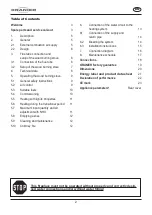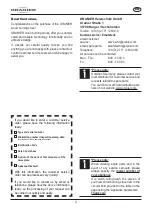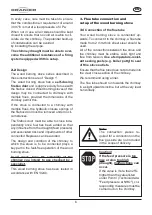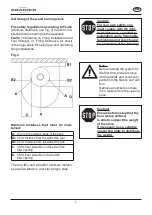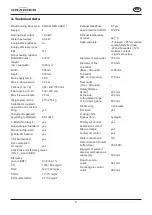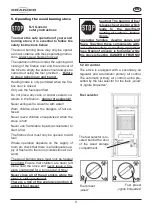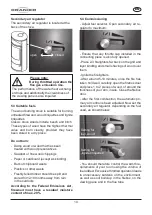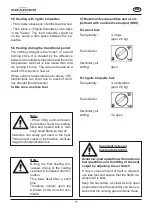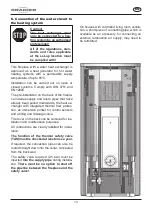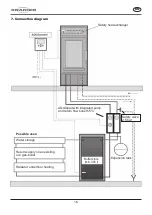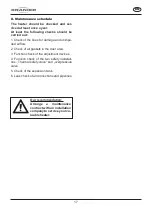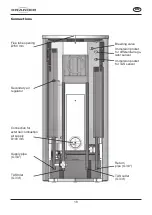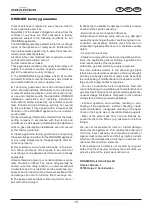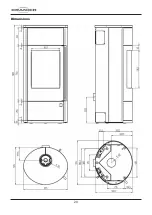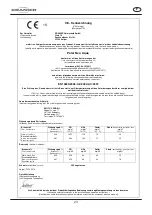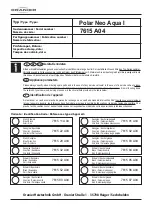
11
EN
5.5
Heating with lignite briquettes
- First create a base pile of embers with wood.
- Then place 2-3 lignite briquettes cross-ways
in the firebox. The third briquette should lie
on top. Leave a little space between the bri-
quettes.
5.6
Heating during the transitional period
The chimney draught is the “motor” of a wood
burning stove. It is created by the difference
between the outside temperature and the room
temperature: warm air is less dense than cold
air, causing it to rise. The vacuum created as a
result of this sucks in new air.
When outdoor temperatures are above 16°C,
malfunctions can occur due to a lack of chim-
ney draught (feed pressure).
In this case, use less fuel.
5.7 Maximum feed quantities and air ad
-
justment with nominal heat output (NHO)
For wood fuel:
Fuel quantity:
3-4 logs
(appr. 2,5 kg)
Fuel selector:
Secondary air
setting:
open
For lignite briquette fuel:
Fuel quantity:
3-4 briquettes
(appr. 2,5 kg)
Fuel selector:
Secondary air
setting:
1/2 open
Note:
During the first heating pro
-
cesses, drying of the coating
can lead to increased odor for-
mation.
This loses itself after a short
time.
Therefore, initially open the
windows of the room for ven-
tilation.
materials can slowly get used to the heat.
Thus prevent cracks in the firebrick, paint da
-
mage and material distortion.
Note:
- When firing a still-cold oven,
the firebox should be carefully
filled and heated with a rela
-
tively small flame so that all
Important notes on
low-load operation:
Avoid low-load operation with maximum
fuel quantities and throttling of the heat
output by adjusting the air slider!
If only a small amount of heat is required,
use less fuel and ensure that the flame de
-
velopment is brisk.
Keep the secondary air slider as fully open
as possible since the secondary air also en-
sures that the viewing pane remains clean.
Summary of Contents for Polar Neo Aqua I
Page 20: ...20 Dimensions ...


